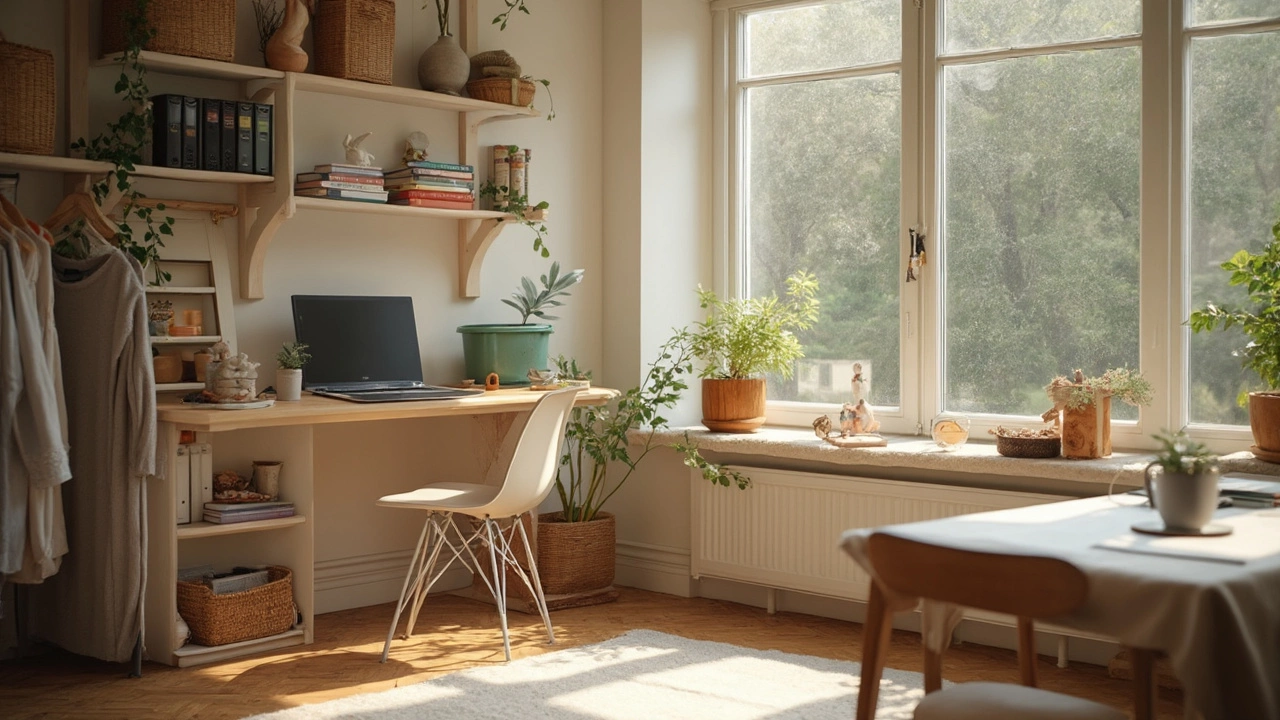Feeling like your storage bill is giving you grief? You're not alone. Loads of folks are in the same boat, wondering how to cut down on those persistent costs. The trick lies in looking at storage in a new light. Start by decluttering. Seriously, it's amazing how much stuff we hoard "just in case." If you haven't used it in the past year, it's probably time to let it go. This can free up a surprising amount of space and might even mean you can downgrade to a smaller unit.
Ever thought about smart storage alternatives? It's a neat way to get creative. Maybe a self-storage community where you share space with like-minded folks? Or a peer-to-peer storage platform that connects you with underused garages or basements in the neighborhood. These options can often be more cost-effective and sometimes even more flexible than traditional storage facilities.
Declutter and Optimize
So, you're looking to reduce storage expenses? The first step is a good ol' declutter. It's like that moment of clarity when you realize half the stuff in your closet hasn't seen the light of day for ages. Let's start with a simple strategy that's tried and true: sorting.
Grab three boxes and label them: "Keep," "Donate," and "Toss." Go through each room or section of your space. Be honest with yourself. If an item hasn't been used in a year or you didn't even remember you had it, is it worth keeping? Probably not. This can make a big difference, clearing space and, in turn, reducing the amount of storage you actually need.
Once you've thinned out your belongings, it's time to optimize what you've decided to keep. Arrange items by frequency of use. Stuff you use daily should be within easy reach, while those 'occasionally used' items can go a bit further back. This new system not only maximizes space but also makes retrieval a breeze.
Another game-changer is using vertical space. Install shelves or use stackable storage bins to make the most of your storage area without expanding it. And here's a cool fact: according to a survey, homes that effectively use vertical space reduce their need for off-site storage by up to 25%. Imagine what low-cost bins from a local home store can save you in rental fees!
Remember, this isn't a one-and-done deal. Make it a habit to declutter periodically—say every six months. It feels good and keeps your storage needs in check. You'll be surprised at how much you can cut expenses just by doing regular clean-ups and smart organizing!
Smart Storage Alternatives
Thinking outside the box can save you heaps when it comes to storage costs. Instead of the usual storage unit, why not consider some lesser-known options? For starters, there's the rise of peer-to-peer storage. This method lets you rent space from folks right in your own neighborhood—kind of like Airbnb but for your stuff. Platforms like Stashbee and Neighbor are leading the charge, and they can often cut your costs by up to 50% compared to traditional self-storage facilities.
If you're more inclined toward eco-conscious solutions, think about co-op storage. It works by pooling resources and sharing larger spaces with others. You get what you need without paying for excess space that never gets filled. These setups are often run by community groups or clubs, which can make it a social win too.
Fancy a more tech-savvy approach? Digitizing your life might be just the answer. Convert those piles of paper documents to digital files with a good scanner and shred away the rest. This can drastically reduce the need for filing cabinets or boxes, paving the way for a more minimalist environment.
Also, consider multi-functional furniture. Pieces like ottomans and beds with built-in storage can clear the clutter without requiring extra space. They're perfect for squeezing out extra room in small apartments or office spaces.
Check out this quick summary of potential savings from these alternatives:
| Storage Alternative | Potential Savings |
|---|---|
| Peer-to-Peer Storage | Up to 50% |
| Co-op Storage | Shared savings based on group size |
| Digital Transformation | Space conservation, cost varies |

Digital Storage Solutions
Let's talk about digital storage solutions and how they can be a lifesaver for your wallet! In today's digital age, a good chunk of what we store physically can actually live happily online without taking up an inch of physical space. Transitioning to digital storage is not just smart, it's often essential.
Cloud storage services like Google Drive, Dropbox, and Microsoft OneDrive allow you to store tons of photos, documents, and even videos without worrying about running out of space. The neat part? It often costs a fraction of what you'd pay for traditional storage. Google Photos, for example, offers free storage for photos and videos at reduced quality, which could be perfect for casual shooters.
Now, let’s not forget about security – a biggie if you're thinking about the cloud. Most services nowadays use top-notch encryption. So your files are safer than those paper boxes in a dusty attic. But, always use two-factor authentication just to be extra safe.
Think digital storage only fits personal needs? Nope! Businesses are riding this wave too. With platforms like Amazon Web Services (AWS) and Microsoft Azure, companies are cutting down costs drastically, as these services offer scalable storage solutions based on actual usage. No more paying for that extra physical space just because you 'might need it someday'.
And hey, if you're worried about internet access – another common concern – many services offer offline access. This means you can store your important documents on the cloud and sync them to your device, so they’re available anytime, whether you're online or off.
To wrap it up in numbers, a simple Google One subscription can start at just £1.59 a month in the UK for 100GB! Compare that to off-site physical storage, and you'll start seeing pounds saved every month.
Cutting Hidden Costs
Ever felt like your storage costs are secretly growing? That's because, often, they are! Many people overlook those sneaky charges hiding right under their noses. Let's tackle this head-on and rescue your budget.
First, keep an eye out for needless fees. Many storage facilities charge you for extras like insurance, admin fees, or 24-hour access. Ask yourself if you really need these services. Even better, try negotiating them down or choosing options that better fit your needs.
Also, consider the location of your storage facility. Facilities located in urban areas or high-demand zones tend to charge more. Opt for storage a little further out; the savings can be significant. Plus, if you're not visiting it frequently, the extra few miles won't even be a bother.
Then there's the issue of contracts. Beware of locker rental terms that trap you into long commitments or come with penalties for early move-out. Read the fine print before signing anything. The more flexibility you have, the better you can adjust your storage strategy as needed.
Finally, keep track of your billing cycles. Sometimes these places will sneak in price hikes or promotional deals that expire. Make sure to regularly assess your storage costs. A quick call to renegotiate can save you a bundle.
Here's a quick look at potential hidden costs you might encounter:
| Item | Potential Hidden Cost |
|---|---|
| Insurance | £10-£20/month |
| Admin Fees | £15-£30 upfront |
| Urban Location | 20-30% more expensive |
Cutting these expenses isn't just about saving money—it's about smart spending. With a bit of vigilance, you'll keep those storage costs well in check.

